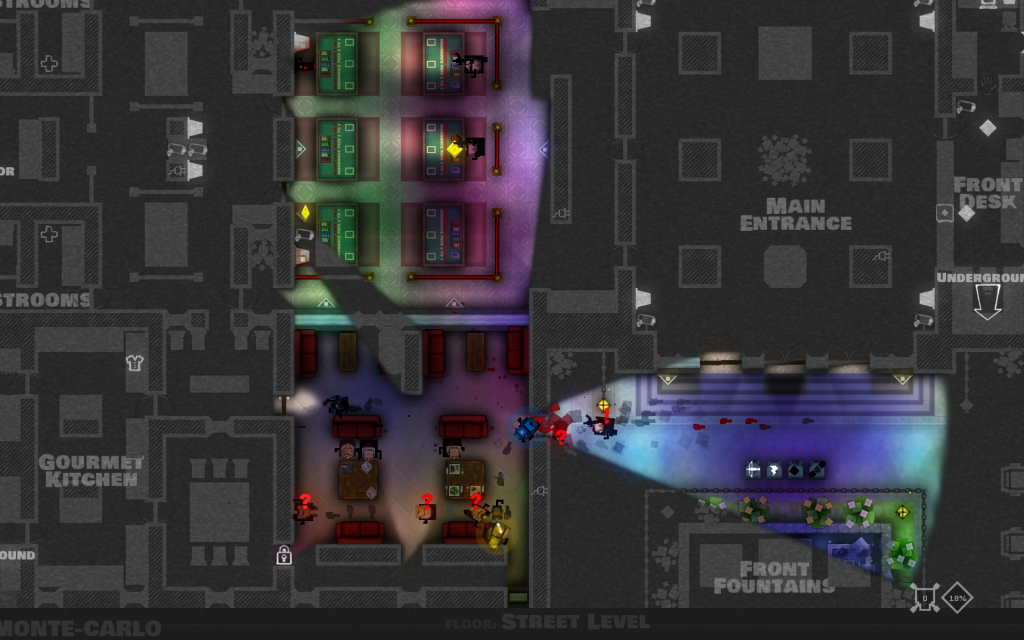Culture
Bit Slap: You should probably be playing Monaco. Like, right now.

Every Thursday in Bit Slap, Joe Anderson and Chuck Rios bring you the latest in gaming news and bon mots. Today, Joe drops knowledge about Monaco: What’s Yours is Mine.
Monaco: What’s Yours is Mine came out last week. I booted up the game hoping for a stellar co-op title that captures the excitement of pulling off a heist with your buddies. And you know what? That’s exactly how that shit went down.
Monaco tasks teams of up to four players with completing increasingly ridiculous heists. Every level, players choose from eight different heist archetypes (e.g., The Hacker, The Lookout, The Locksmith), each with unique perks. Each class plays a bit differently, but doesn’t shoehorn the player into hyper-specialized roles. Regardless of class, players have access to a wide range of abilities; everyone can pick locks, crack safes and hack security terminals. Instead, the classes are probably better described as each cheating the game in some way. The Lookout, for example, reveals the location of all guards regardless of line of sight, and The Cleaner chloroforms unsuspecting foes. These abilities make certain aspects of the game easier but are never required.
The Mole is a personal favorite of mine. He has a sledgehammer. He uses it to break through walls in what can only be described as an ultimately satisfying experience. You will pity your teammates, forever stranded in a reality where walls are obstacles and not potentialities for goofy hidey-holes. There is a sort of primal urge that takes over when you play The Mole, one that transforms this heist game into the hammer game.
There’s a lot to like about Monaco. The tone and humor of the game are pitch perfect, the level designs are great, and the soundtrack—produced by Grammy-nominated Austin Wintory, the same mind behind Journey’s OST—is simply masterful. But what impresses me with most about Monaco is the way it presents visual information. When I started following the game’s development about a year ago, I kept wondering how the game would work with the chaos of four players, each relegated to their respective facet of the heist. How the hell were you going to tell what’s going on when you’re playing with a full team?
Monaco is simply a beautiful marriage between aesthetic and functionality. Even though there’s so much happening at any given moment, the game’s visual design ensures there isn’t any cognitive overload. Every icon is explanatory and the relationships between key objects—security terminals and their corresponding camera systems, for example—are easily discernible at a glance. Monaco’s intuitive presentation of visual information helps capture the expertise we’ve seen in countless heist movies. It’s empowering: you are able to look into a sea of chaos, parse out the necessary information, and get to heistin’. It doesn’t always go according to plan—and that’s half the fun sometimes—but damn it, you had a plan.
One caveat: currently, the PC version only supports 360 gamepads. For other gamepads—I personally use PS2 controllers with a USB adaptor—check out x360ce. It’s a nifty little piece of software that forces games to recognize any gamepad as a 360 controller.